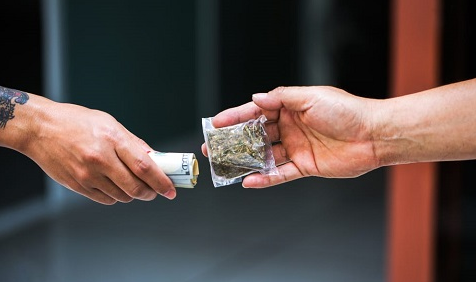Canadians Continue to Spend Billions on the Illegal Cannabis Market
Nearly six months have passed since recreational cannabis officially became a fully legal and regulated product in Canada. During this period, Statistics Canada has closely monitored the dynamics of both the legal and underground cannabis markets, publishing official data on consumer preferences among Canadians who use the plant for various purposes.
“On average, over the past five months, the country’s population spent about $5.9 billion (nominal estimate) on recreational and therapeutic cannabis. Of this amount, approximately $4.7 billion was generated by the black and gray cannabis markets, while the legal industry earned the remaining $1.2 billion,” the report notes. “On average, citizens spend about 0.5% of their monthly budget on cannabis for personal use. According to data from the last quarter of 2018, recreational cannabis purchases accounted for about 11.2% of total spending on recreational substances (including tobacco and alcohol) during this period.”
Despite statistics showing a growing interest in purchasing cannabis, most Canadians still prefer to buy the plant through familiar dealers rather than legal stores. Nearly 80% of consumers continue to regularly purchase cannabis through gray and black market channels.
Why Do Canadians Still Prefer the Underground Market?
The report’s authors propose several theories as to why citizens continue to favor underground sources over legal establishments.
“Data collected nationwide, including information from the StatsCannabis crowdsourcing platform, shows that the average price per gram of legal cannabis was about $9.70 at the end of 2018,” the report states. “At the same time, the price per gram on the black market was about $6.51, which is 32.9% cheaper than the average retail price for the same amount of legal product.” (It’s worth noting that the report’s authors caution against interpreting these figures as absolutely precise, since the calculations are largely based on unverified self-reports from consumers surveyed for the study.)
Additionally, the report notes that a significant “gray” cannabis market still exists in the country, represented by private businesses that are technically not certified to produce or sell cannabis or related products.
Vancouver: The Center of the Gray Market
Currently, Vancouver remains the center of this industry, having technically regulated cannabis sales at the municipal level as early as the summer of 2015. However, the local market operates under somewhat different rules than the federal legalization system, so it is formally recognized as part of the gray market by the government.
At present, city authorities are working to gradually transition the local market to comply with federal laws. On January 5, Evergreen Cannabis became the first store in Vancouver to be formally certified by government regulators for legal retail cannabis sales. It’s likely that soon, city officials will be able to transition dozens of other stores to the new, official system.
Forecasts for the Legal and Illegal Cannabis Markets
Although the underground market still dominates in terms of sales, officials at Statistics Canada suggest that by the end of the year, the share of profits from the black and gray markets will significantly decrease as the legal industry develops and grows.
Overall, experts predict that by the end of the year, the underground market’s share of total cannabis industry profits will drop to 70-71%. By the end of 2020, this segment is expected to represent only 37% of the industry’s total revenue.
However, analysts note that these figures are an optimistic forecast, taking into account the country’s successful efforts to overcome the ongoing shortage of legal cannabis, which is related to regulatory challenges in the market.



